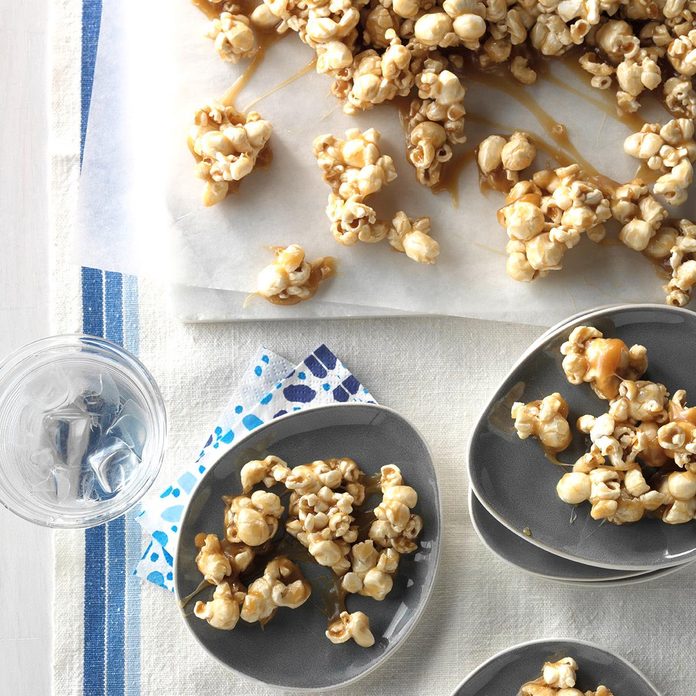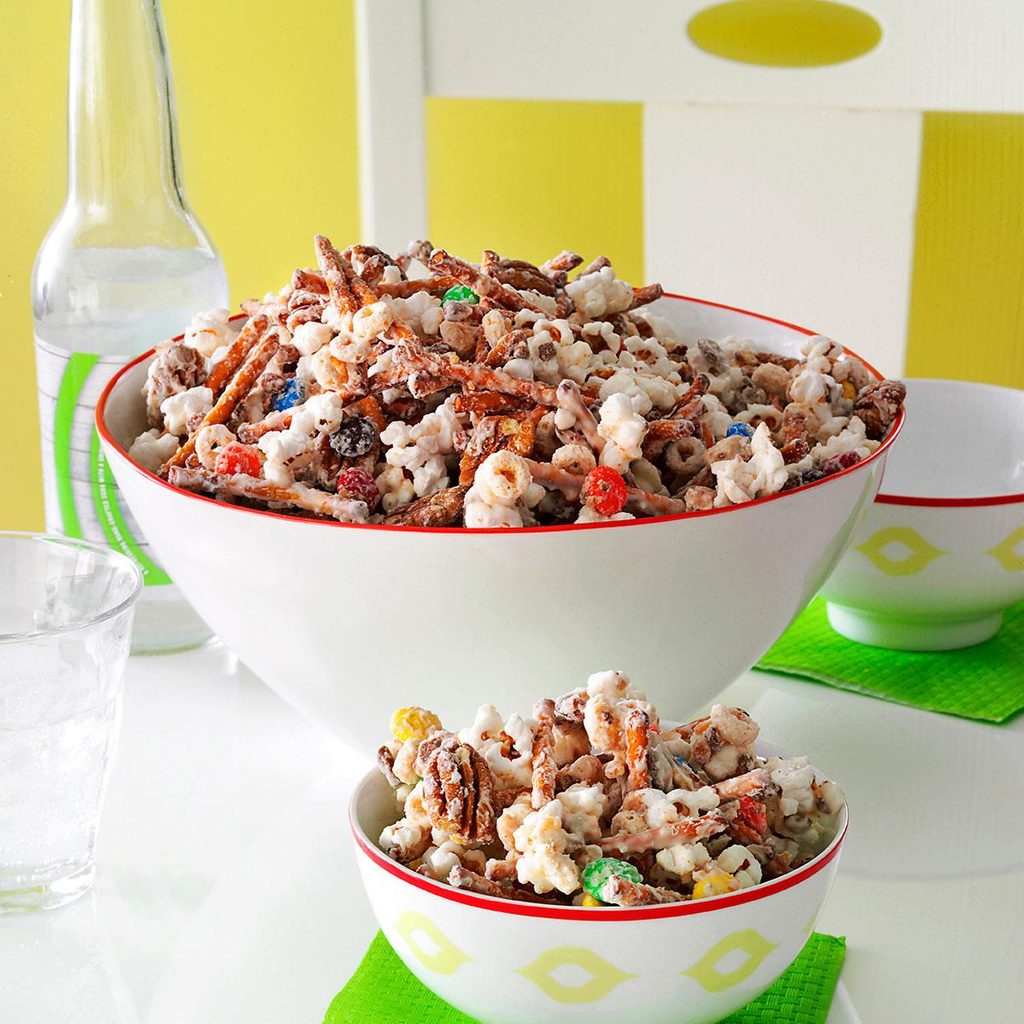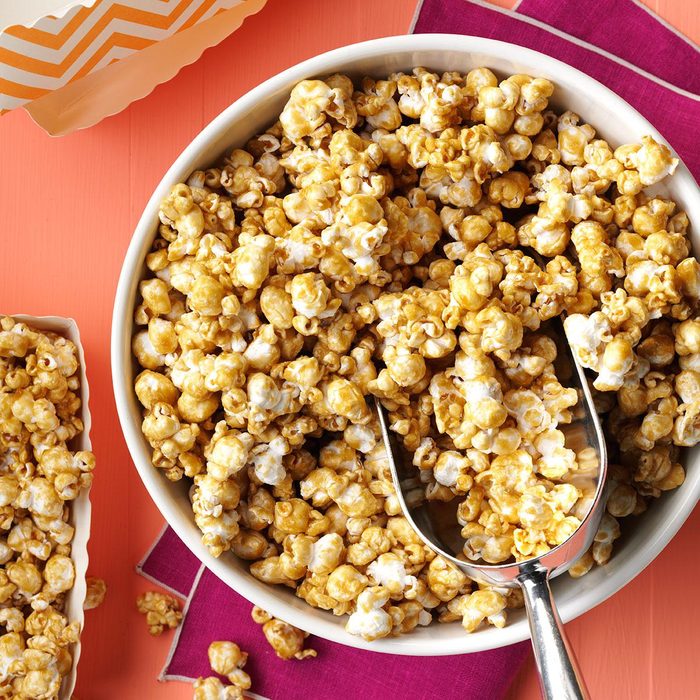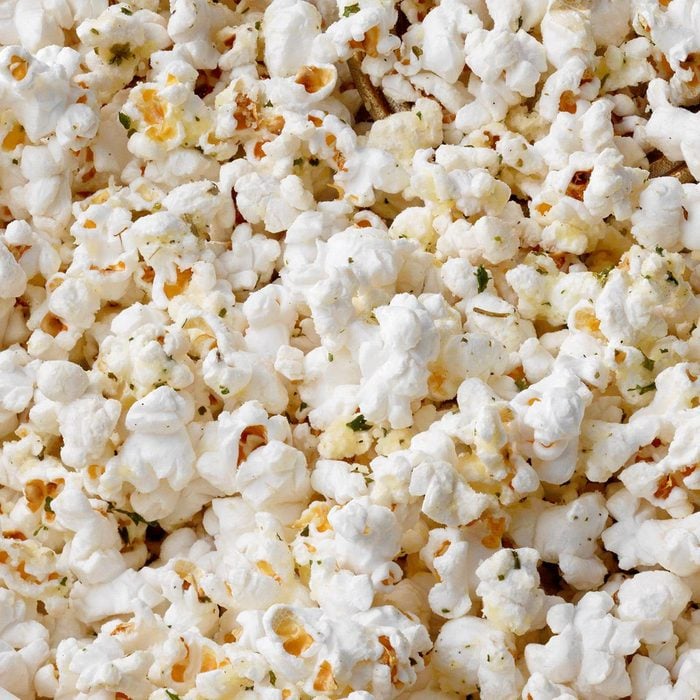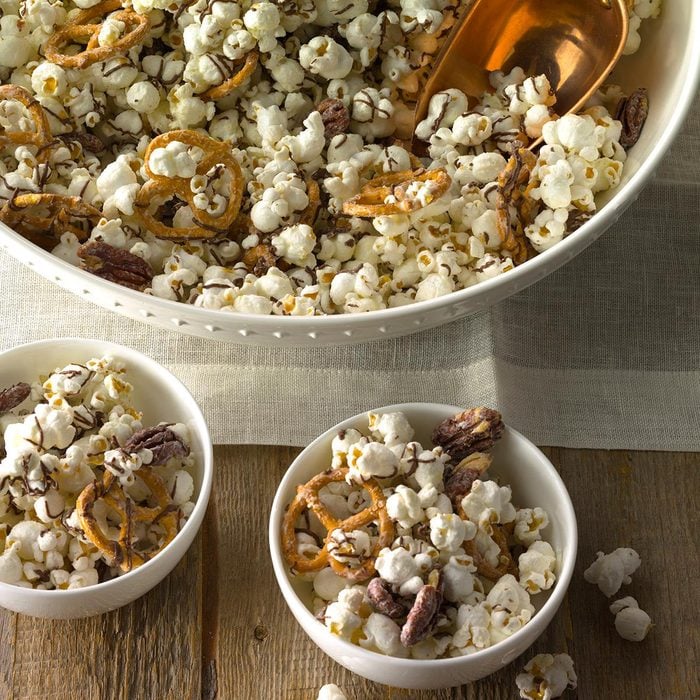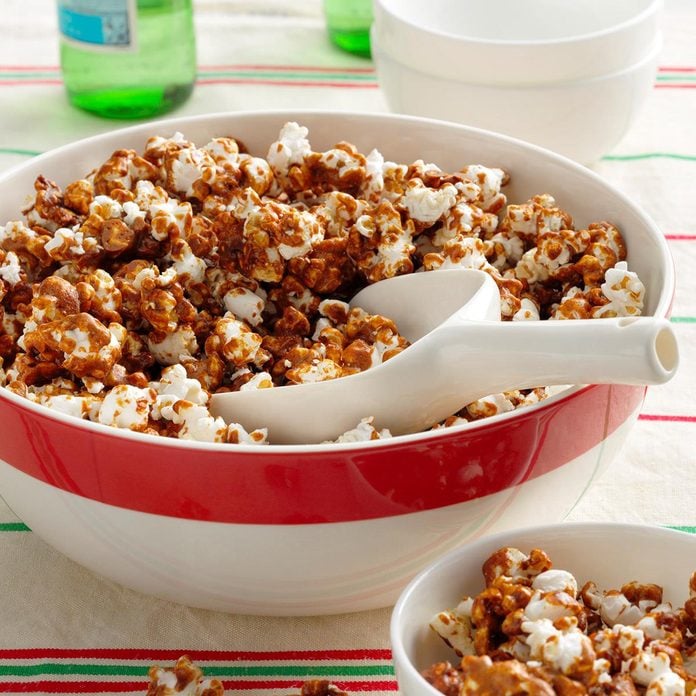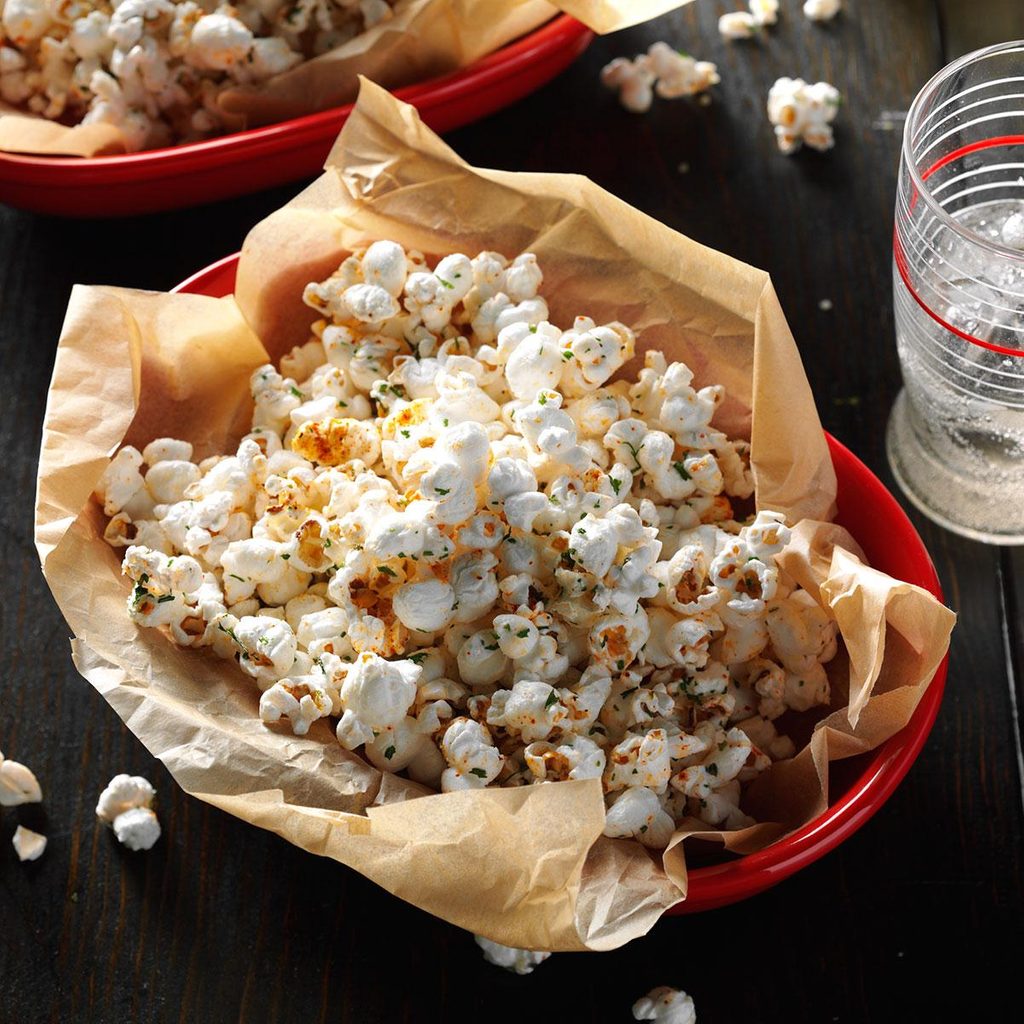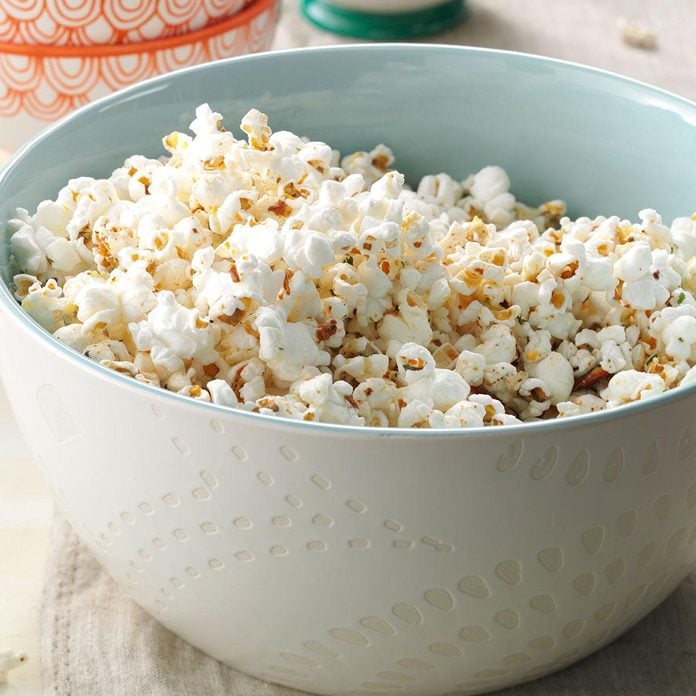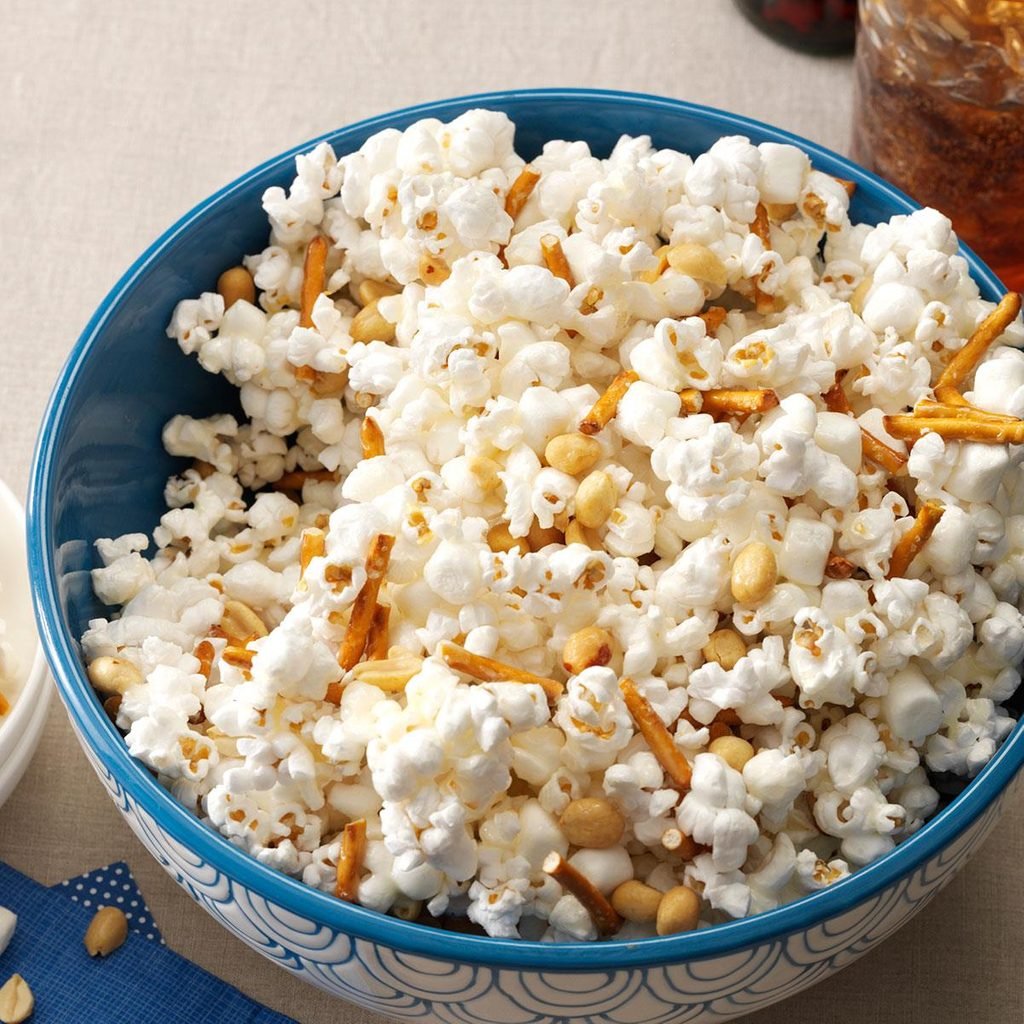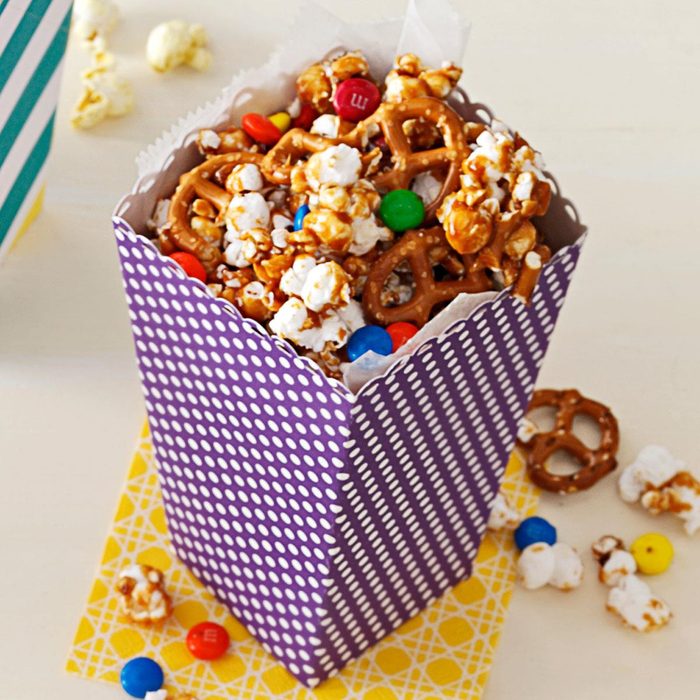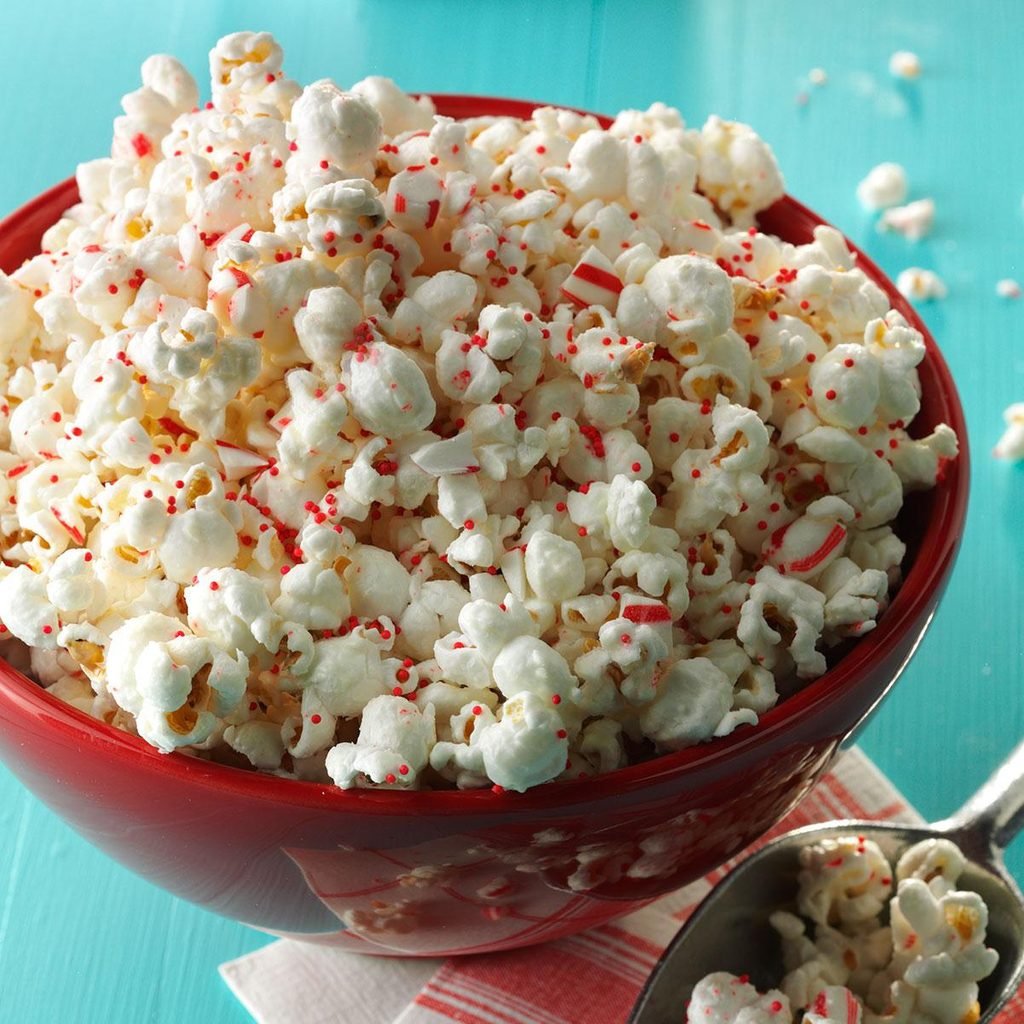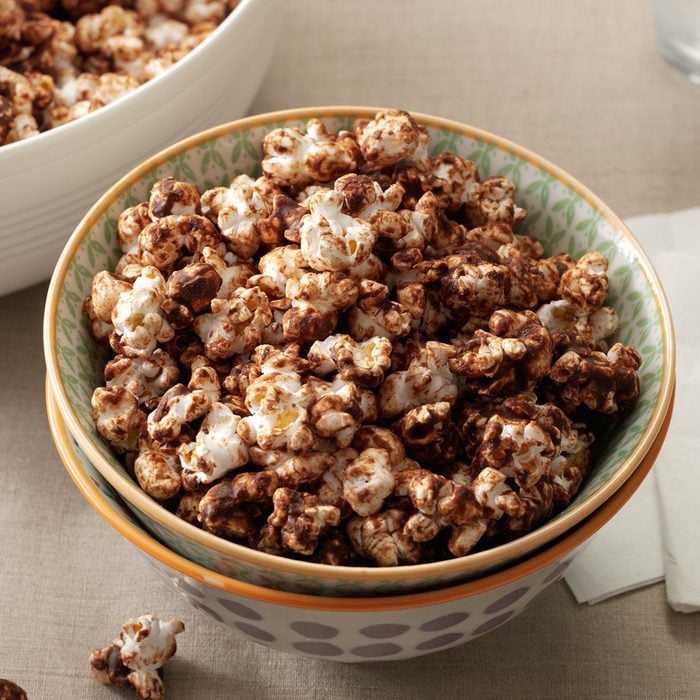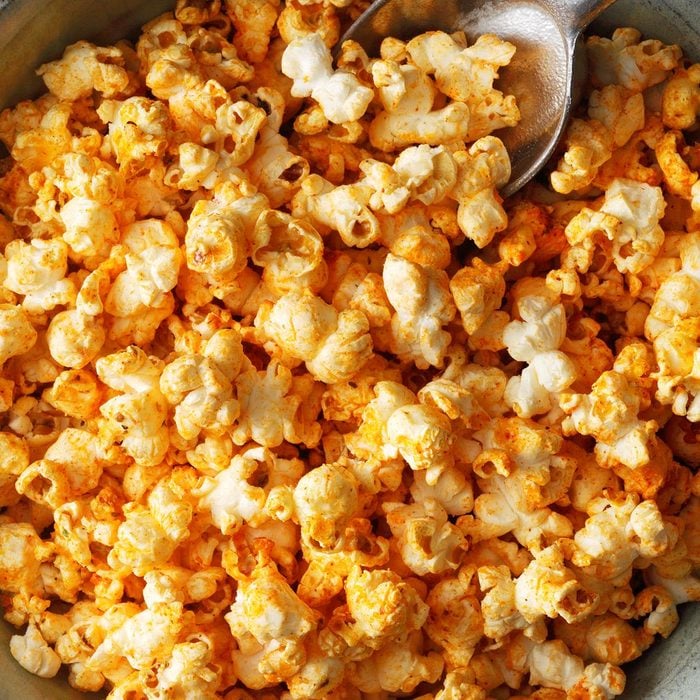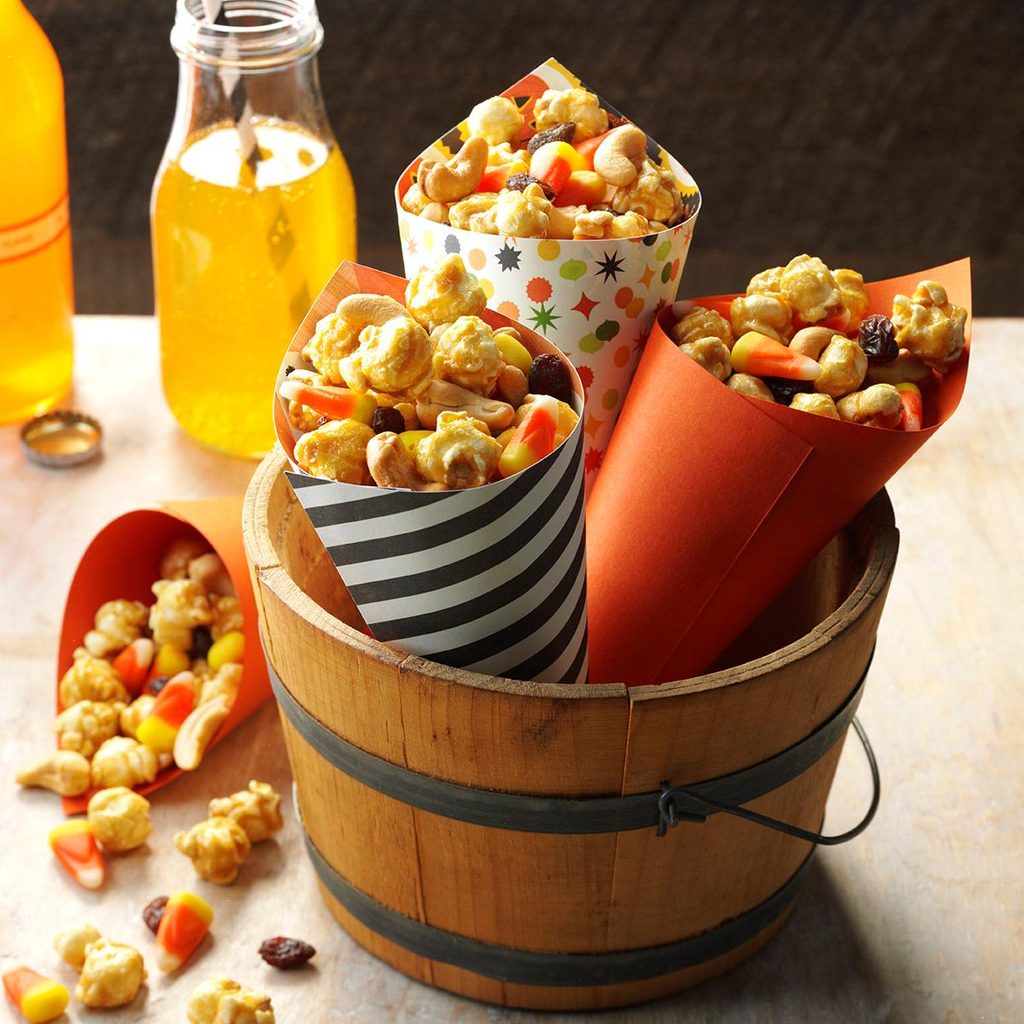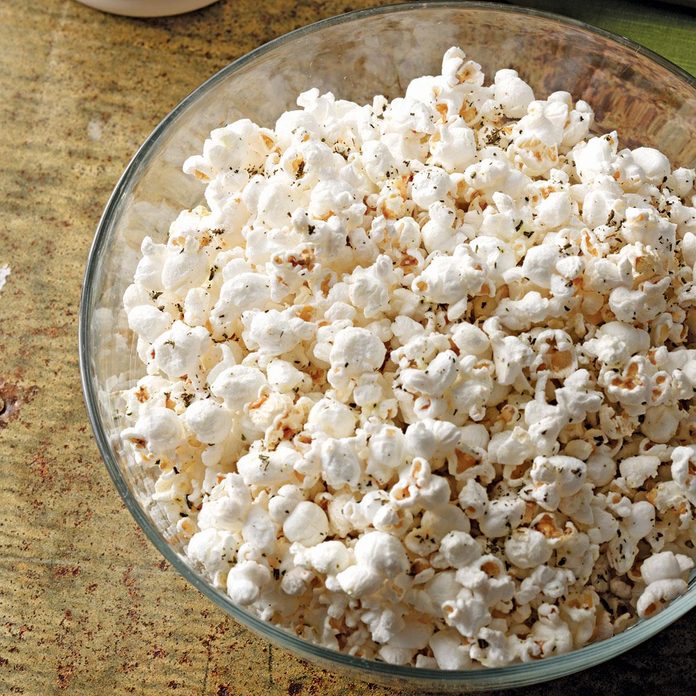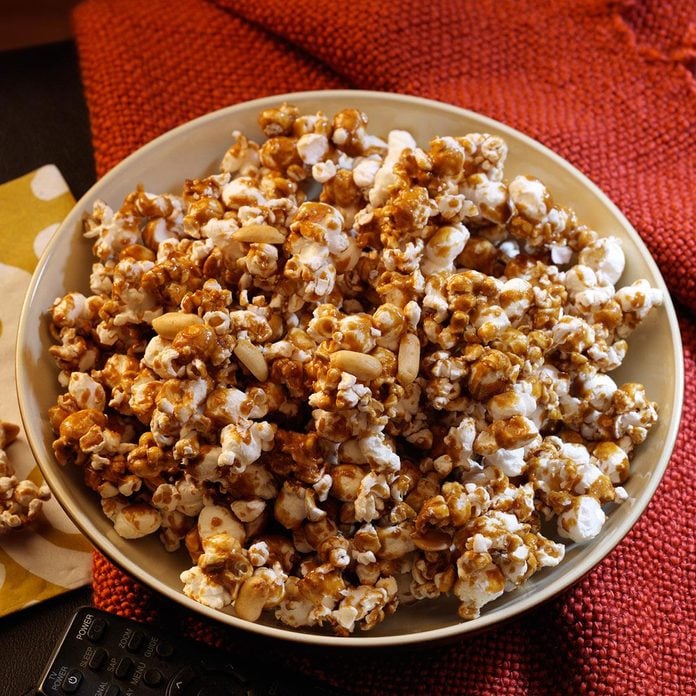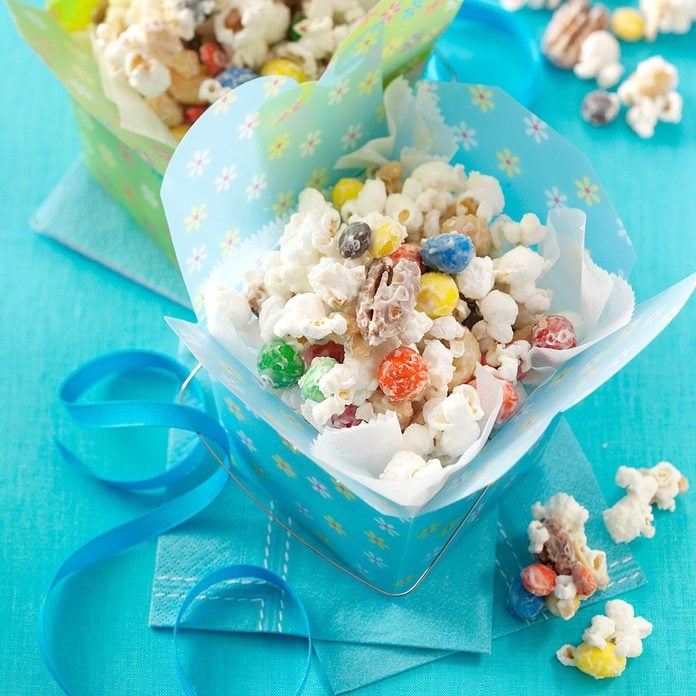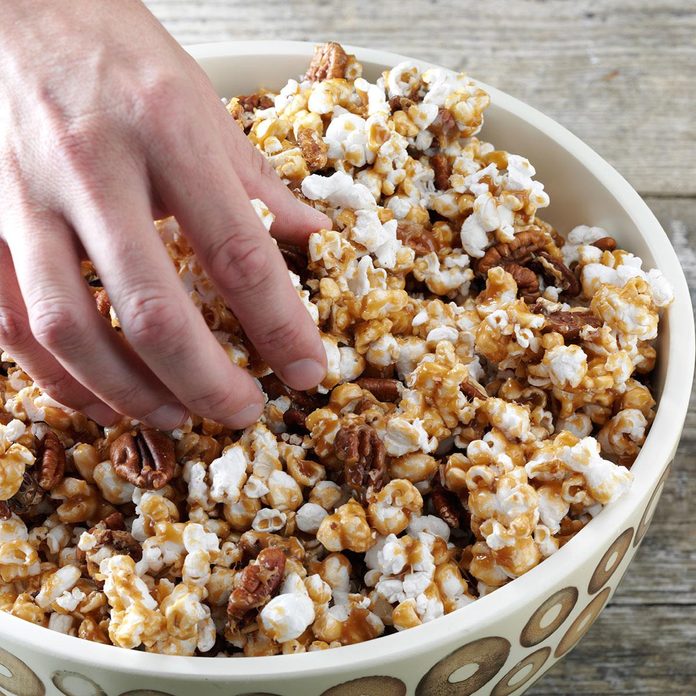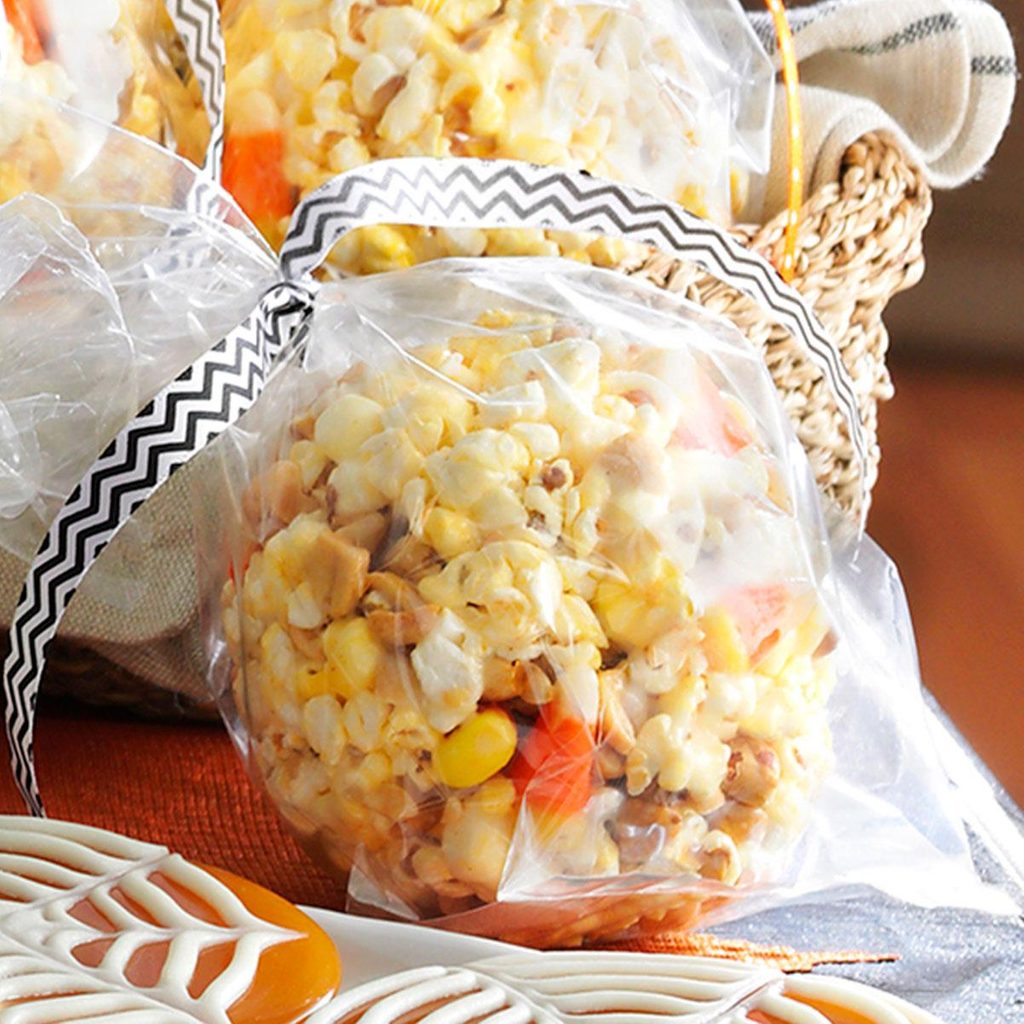How to Make Popcorn on the Stove
Updated: Dec. 07, 2023
Learn how to make popcorn on the stove, just like Grandma did. Our Test Kitchen shows you how, step by step.
Our editors and experts handpick every product we feature. We may earn a commission from your purchases.
When I was growing up, my family ate a lot of popcorn. Microwave popcorn was our go-to for movie nights (here’s the best microwave popcorn brands), and we’d always buy kettle corn by the sack at summertime fairs. But the best popcorn was the stovetop popcorn my grandma made.
Once you learn how to make popcorn on the stove, it’s hard to go back to anything else. It takes a bit more effort than other methods, but it’s easy enough to make late at night when you’re in the mood for some healthy, crunchy snacks. These tips from our Test Kitchen will help you make perfect stovetop popcorn every time. And, this StoveShelf will help clear all your counter clutter!
Tools You Need for Stovetop Popcorn
You can make stovetop popcorn with any large, heavy-bottom pot that has a lid. (This ensures even heat and prevents the corn from scorching.) We recommend using a Dutch oven for the recipe below.
For an even more foolproof stovetop popcorn method, we love the Whirley Pop. This old-fashioned stovetop popcorn maker has a crank to help stir the popcorn to prevent burning, and it’s the overall best popcorn maker according to several Taste of Home editors and staffers.
How to Make Popcorn on the Stove
This recipe yields a big batch—about 10 cups of popcorn. For more popcorn-making tips, check out our guide for how to make the best popcorn.
Ingredients
- 2 tablespoons oil, such as canola or peanut
- 1/3 cup popcorn kernels
- Melted butter
- Salt
Directions
Step 1: Bring the heat
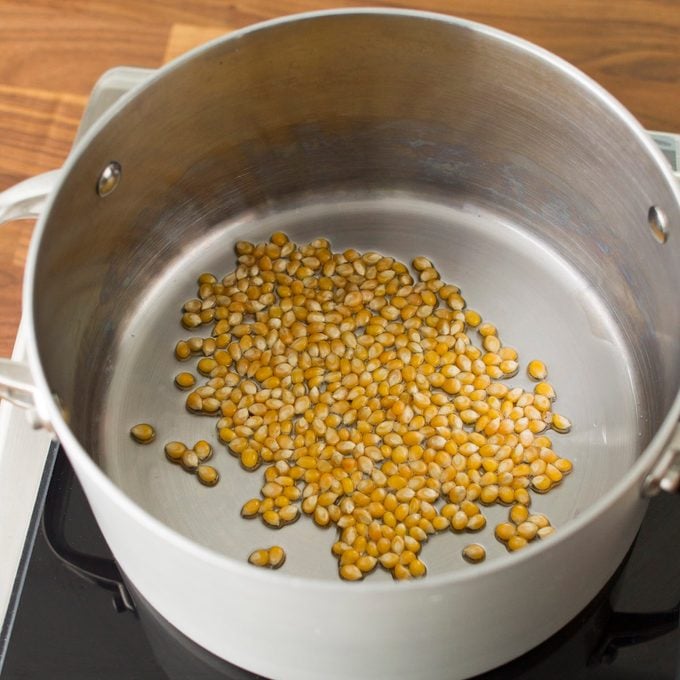
Pour the oil and kernels into the pot and cover. Set on the stove over medium heat. Wait. You’ll hear the popcorn begin to sizzle. Keep waiting. (Have a pair of oven mitts at the ready!) Eventually, you’ll hear the first pop.
Editor’s tip: Using medium heat is important to avoid burning the kernels. To test the temperature, heat the oil in the pot with just a few kernels in it. Once those kernels pop nicely, you’ll know it’s time to add the remaining kernels.
Step 2: Shake it
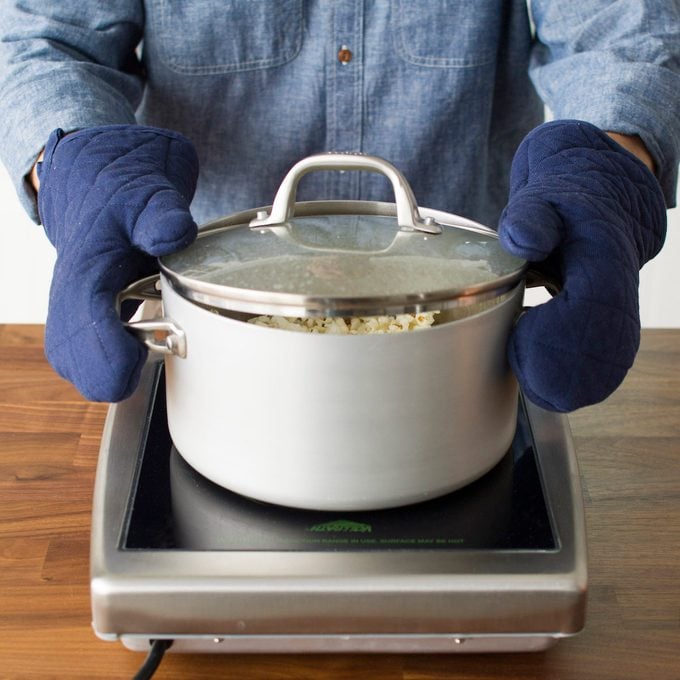
Once the first kernel pops, start shaking the pot, holding onto the lid so it doesn’t fly off. (For extra-crispy popcorn, keep the lid ajar when you’re shaking or use a lid that has a vent hole to allow some steam to escape.)
Keep on shaking as the popping rate increases—this is key to avoid burning the kernels. After 2 or 3 minutes, the popping will slow down and eventually putter to an infrequent pop. Remove the pot from the heat.
Test Kitchen tip: Keep the lid on the pot for another minute after you stop shaking—a few more kernels may still pop. When you remove the lid, open it away from you to avoid contact with the steam.
Step 3: Add mix-ins
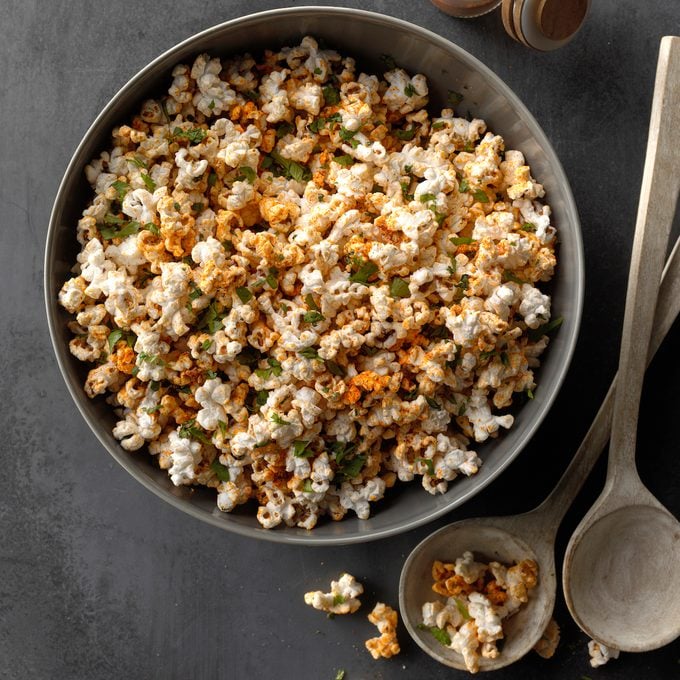
Pour your melted butter over the popcorn and shake. I like to do this right in the pan and add the salt last so it adheres more evenly. If you want to branch out from the classic butter and salt popcorn toppings, try these flavored popcorn recipes.
Test Kitchen tip: For movie theater-style salt, use superfine popcorn salt or use a mortar and pestle to grind up regular salt. The fine grains will make your batch pleasantly salty, and you’ll be able to use less salt without sacrificing flavor.
Stovetop Popcorn Tips
Is stovetop popcorn healthy?
Low in calories and high in fiber, popcorn is generally healthy. But as with all homemade popcorn, stovetop popcorn can be as healthy (or as unhealthy) as you make it—it all depends on how much butter, salt and other toppings you add. Stovetop popcorn is typically healthier than store-bought microwave popcorn or buttery movie theater popcorn, but air popped popcorn is the healthiest.
How do you make popcorn fluffy?
For the lightest, fluffiest popcorn, make air popped popcorn or homemade paper bag popcorn in the microwave. Stovetop popcorn is known for being crispy and flavorful because you cook it in oil. The type of popcorn kernels you use—yellow or white—can also make a difference in texture.
What is the best oil for stovetop popcorn?
When you’re making popcorn on the stove, you need to use oil in order for the kernels to pop. Use an oil that has a high smoke point, such as canola, grapeseed, sunflower or another vegetable oil. If you’re not sure about an oil’s smoke point, check out our guide to the different types of cooking oils. While butter is a delicious popcorn topping, don’t use butter for popping your kernels—it can lead to soggy or burnt popcorn.
Taste of Home Senior Food Editor Peggy Woodward, RDN, and Taste of Home Associate Digital Editor Teddy Nykiel contributed to this article.

